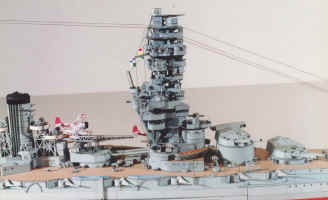

Brooklyn, Philadelphia and Newport News each gained two building docks, Norfolk gained one.

entered hostilities additional capacity was brought on board. Either just prior to or soon after the U.S. Norfolk Shipyard, Bethlehem Steel's Fore River yard and the New York Shipbuilding Co. The Brooklyn and Philadelphia Shipyards and Newport News each had 2 traditional inclined slipways capable of building a BB or CV. Part of the reason is the space requirement for slowing and maneuvering the vessel immediately after it has left the slipway, but the sheer size of the vessel causes design problems, since the hull is basically supported only at its end points during the launch process and this imposes stresses not met during normal operation.I've done what can only be described as fairly crude research to discover what exactly the U.S.'s capacity for building BBs and CVs was just prior to and during WWII as far as available slipways and building docks. The practice of building on a slipway is dying out with the very large vessels introduced from about 1970. In both cases heavy chains are attached to the ship and the drag effect is used to slow the vessel once afloat until tugboats can move the hull to a jetty for fitting out. This method requires many more sets of ways to support the weight of the ship. The Great Eastern built by Brunel was built this way as were many Landing Craft during World War II. This is done where the limitations of the water channel would not allow lengthwise launching, but occupies a much greater length of shore. Some slipways are built so that the vessel is side on to the water and is launched sideways. On launching, the vessel slides backwards down the slipway on the ways until it floats by itself. At this point the hull is complete and the propellers and associated shafting are in place, but dependent on the depth of water, stability and weight the engines might have not been fitted or the superstructure may not be completed. It is the point where the vessel is formally named. The process of transferring the vessel to the water is known as launching and is normally a ceremonial and celebratory occasion.

Provision is made to hold the vessel in place and then release it at the appropriate moment in the launching ceremony, these are either a weak link designed to be cut at a signal or a mechanical trigger controlled by a switch from the ceremonial platform. The weight of the hull is then transferred from the build cribbing onto the launch cradle. (Tallow and whale oil were used as grease in sailing ship days.) A pair of sliding ways is placed on top, under the hull, and a launch cradle with bow and stern poppets is erected on these sliding ways. When it is time to prepare for launching a pair of standing ways are erected under the hull and out onto the barricades. The vessel is built upon temporary cribbing that is arranged to give access to the hull's outer bottom, and to allow the launchways to be erected under the complete hull. The barricades support the two launch ways. Modern slipways take the form of a reinforced concrete mat of sufficient strength to support the vessel, with two "barricades" that extend to well below the water level taking into account tidal variations. Normally they are arranged perpendicular to the shore line (or as nearly so as the water and maximum length of vessel allows) and the ship is built with its stern facing the water.

For large ships, slipways are only used in construction of the vessel.


 0 kommentar(er)
0 kommentar(er)
